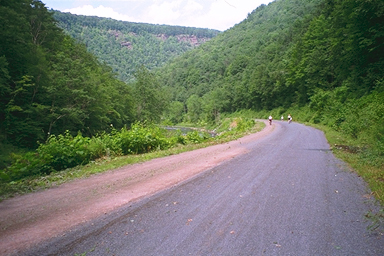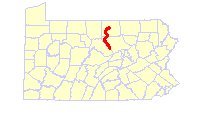 There's a bicycle path in northern Pennsylvania called the Pine Creek Rail Trail that meanders 62 miles along a river that passes through a valley aptly called the Grand Canyon of Pennsylvania.
There's a bicycle path in northern Pennsylvania called the Pine Creek Rail Trail that meanders 62 miles along a river that passes through a valley aptly called the Grand Canyon of Pennsylvania.
The Rails to Trails Conservancy conducted a survey there last year that proves the adage heard in the movie Field of Dreams: “Build it and they will come.”
The survey found that not only do they come, but they contribute to the local economies. While the trail has cost about $12.6 million to build since 1995, the Pine Creek survey determined that visitors spend from $5 million to $7 million a year, most of which is spent in the local communities along the trail.
Leaving aside the aesthetic or fitness benefits of a trail, that economic impact should encourage all communities to take those old bike trail plans off the shelf, dust them off, and start spreading the crushed limestone or asphalt.
The survey
Conducted through the spring, summer and fall of 2006, the Pine Valley Rail Trail survey (.pdf) counts responses from a little more than 1,000 trail users, the majority (86%) of whom were Pennsylvania residents; 64% were bicyclists.
Analysts used data from the survey and trail-use figures to arrive at the $5 million to $7 million annual economic impact for the trail.
Local spending
While some of the spending for “hard goods” such as bicycles went to businesses around the state, local spending for food and snacks totalled $2.5 million to $3.6 million and for lodging tallied between $1.3 million to $1.9 million.
The trail's impact on the economy has been great. 82% of the respondents said they had purchased bikes, accessories or clothing for an average expenditure of $354. Further, 86% reported they spent money on such “soft goods” as lunches, ice cream, drinks to the tune of an average $30 per trip.
Another boon to the local economy, 57% said they spent at least one night in the area. On average, the overnighters spend just over 3 nights per visit and spend $69 per night.
 Owners of general stores, restaurants and hotels in towns along the route were interviewed, and they all agreed that business had picked up since the trail opened, and many had added new products and more employees.
Owners of general stores, restaurants and hotels in towns along the route were interviewed, and they all agreed that business had picked up since the trail opened, and many had added new products and more employees.
History
The trail's history starts in 1883 when it was a railway used to carry timber out of the mountains. Its used shifted to coal trains in the 1890s, then to general freight and passenger service. The last train ran on the line in 1988.
Pennsylvania acquired the abandoned right of way for $1 in 1990 and started building a trail in 1995, which now runs roughly from Ansonia to Jersey Shore. Along the way is passes through state forests and rural countryside.
The Pine Creek Rail Trail is the site for the 2008 Greenway Sojourn, sponsored by the Rails to Trails Conservancy. Dates are June 24-28, 2008. Check with pat@railstotrails.org for more information.

1 pings
[…] it and they will come… and spend.” Economic impact studies along Pennsylvania’s Pine Creek Trail and Great Allegheny Passage trails has borne this […]